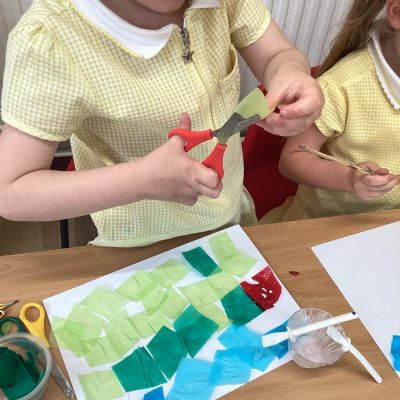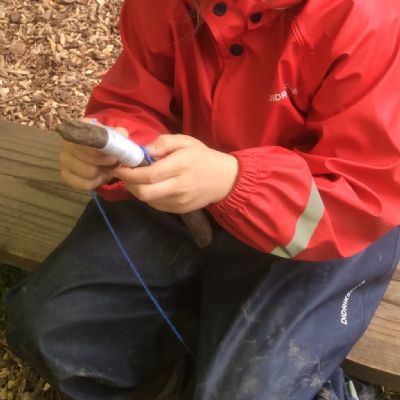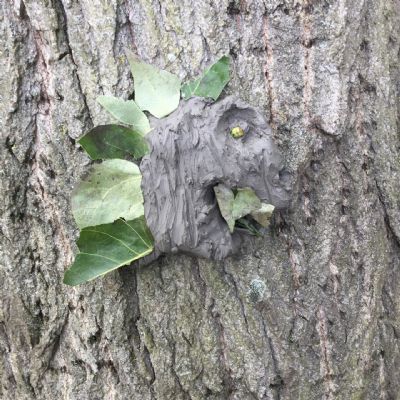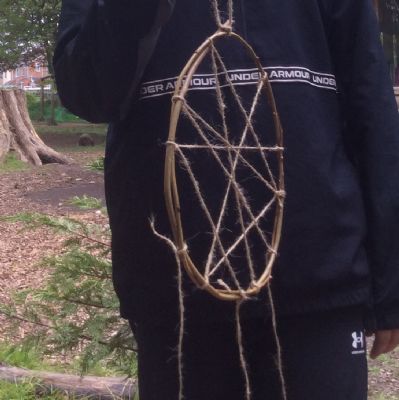Summer Term
Nursery
Woodland: Leaf People
- know that closing lines will make a shape
- show control when closing lines to represent human form
Reception: Eric Carle
In the summer term, children will:
- Know when doing an observational drawing you need to look at the object.
- Know the term collage.
- Know how to use a range of textures to create a desired effect
- Can hold drawing medium (pencil, chalk etc) with increasing control, using a consistent grip. (full grip of three fingered grip.
Woodland: Stick Animals
- know that paint is mixed to change colour
- know that a brush stroke is a mark made by a paintbrush
- can hold painting medium with increasing control, using a consistent full grip or three-fingered grip
Year 1: Holidays - Textiles
In the summer term, children will:
- know that refining lines means to make them more accurate
- know the primary colours and where they are on the colour wheel
- know that blue, green ans purple belong to the cool colour family
- destinguish fabrics and threads by colour and texture
- idntify the technique of weaving with fabrics and threads as a method of joining materials
- show accuracy when when cutting materials for their work
- sort threads and fanrics for a purpose
The children will learn all about textile techniques. They will focus on weaving to create a final piece based on an underwater scene - taking inspiration from crafts people around the world, in particular, Gunta Stolzl.

Woodland: Clay Pebble Circles
- gather and sort the materials they will need
Year 2: Coastline - Drawing/Mixed Media
In the summer term, children will:
- know that directional shading is moving the pencil/pastel back and forth using contour lines as a guide
- begin to folloe the contour lines when shading
- choose the position of the pencil based on purpose e.g.angled to apply tone
- know that tints can be created by adding white and shades of one colour can be created by adding black
- explore tints and tones
- name methods/techniques of joining materials such as stitching, glueing and taping - join structures and apply decorations
- identify types of stitches e.g. running stitch, and practise stitching to join and enhance work
The children will look closely at the work of 'The Seaside ' artist, Alfred Wallis. They will use pen, pencil and colour pencils to create sketches, before using oil pastels, collage and stitching techniques to create their final seaside compositions.

Woodland: Hanging Clay Flower Press
- know the term relief print
- create a print
Year 3: Greek Pots & Vases - Drawing/sculpture
In the summer term, the children will:
- know that highlighting areas of a drawn object with white, can create the illusion of reflected light
- choose the correct paint brush for purpose e.g. holding the paint brush with a three-finger grip close to the tip to add detail
- apply lines and shapes with increasing accuracy
- know how to create clay coils and methods of blending clay
- know how clay can be manipulated to create a variety of 3D forms
- explore using clay to create a clay container
- shape clay and other moldable material
- make notes about techniques used by artists/crafts people
The children will explore Greek pots and vases, looking at coil techniques used to create containers. The children will study the work of Monica Young (ceramics) and create their own contempary coiled pots.

Woodland: Indigenous Australian inspired art -Textile/Painted Sticks
- explain and demonstrate in their art how to use a range of dry and wet media to create a sculpture
Year 4: Clay Dragon Eyes - Drawing/Sculpture
In the summer term, children will:
- know that texture can be manipulated via differernt methods and techniques such as layering, stippling and different types of mark making
- know that refining lines, shapes, tonal gradients will help to create a more accurate and realistic outcome
- know that erasers can be used expressively to create texture in a drawing
- begin to understand that composition of an artwork can effect the focal point
- use research to inspire draeings from memory and imagination
- identify and describe how to join clay using slip and score
- know how to create texture in clay and which tools are most suitable for a desired effect
- select from a range of tools to add detail
- explore how to create a range of textures in clay
In this topic, the children will look in detail at the carvings on a longboat, they will carry out detailed sketches of dragon heads and eyes, in a variety of media, before craeting a clay model, taking inspiration from Beate Kuhn.

Woodland: Willow/Tissue Plant Hanging
Define and combine visual and tactile qualities and apply these in their own 3D work
Year 5: Architecture - Drawing/ 3D/ Mixed Media
In the summer term, the children will:
- know that objects can be affefcted my many light sources
- know what techniacal drawings are and know that H pencilsmare best for this type of drawing
- work in a susutained and independent way from observation, experience and imagination
- begin to create technical drawings
- draw elements of the same object using accurate proportions
- understand that architects and other artists have a responsibility towards society and can help shape the world for the better
- know and use a combination of materials, construction methods and tools to create 3D cityscapes
- plan a sculpture through drawing and other preparatory work
- demonstarte an understanding of shape, space and form
- keep notes on how they might develop their work further
The children will study the Liverpool skyline including the Liver buildings (The Three Graces) and the architect Walter Aubrey Thomas. Then they will compare his designs to Zaha Hadid's creations. The children will use their studies to create 3D mixed media art.

Woodland: Clay Tree Faces
- know how to use a combination of materials, construction methods and tools to create a 3D piece
- demonstrate an understanding of shape, space and form
Year 6: WW2 Henry Moore Shelters - Sketching and sculpture
In the summer term, the children will:
- name sketching techniques e.g. contouring, stippling, scrumbling and linear hatching
- know the effect of light on a shape/form from different directions
- know the concept of perspective, foreground and background
- know that perspective allows artists to portray form in their work
- know that tone can effect the ability to create form
- use directional shading with confidence to create form in a drawing
- create objects in the foreground that appear than those in the background and midground
- shapes and lines are refined independently using controlled lines
- know how to combime materials and amd processes to design amd make 3D form (wire, armature and modroc
- convey a message through their sculpture
- use recycled, natural and manmade materials to create a sculpture
The children will develop their art techniques in life drawing, demonstrating control of pencil, pastels and charcoal to create sketches in the style of Henry Moore's WW2 shelter drawings, before creating their own wire/foil/modroc sculpture.

Woodland: Indigenous American Art Dream Catchers
- use recycled, natural and manmade materials to create a sculpture

.jpg)
.jpg)
.jpg)
.jpg)























